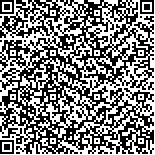下载中心
优秀审稿专家
优秀论文
相关链接
摘要

介绍了一种在建筑物内部空间利用GIS辅助视频监控的新方法.此方法通过一个结点弧段网络模型表示建筑物内部的可达空间,利用一个新颖的拓扑数据结构建立和维护可达空间与视频监控设备之间的空间位置关系.在建立结点弧段网络模型时,考虑了不同的情景,如楼层之间的空间及大型开敞空间等.基于此种模型及数据结构,描述了一个利用此方法进行快速定位可疑移动目标的实例及其实现过程.
A widely-applied fashion ofsecurity surveillance, also known as closed circuit television (CCTV), inmicrospatial environments, such as inside a building, is to have security personnel sit in front of a wall ofmonitors, which corresponds to spatially-distributed video cameras, and respons (e.g.alarms, access contro,l etc.) on any emergent events or suspicious objects. In particular, if awatched object ismobile,e.g.a theft, security personnel need to keep track of the object’smovement through frequently switching their visual focus among monitors. Even for experienced security personne,l the tracking process is flustered if the numberofmonitors is large or themonitored objectmoves fast.To the bestofourknowledge, there is still lack ofapproacheswhich can provide security personnelwith leads to track and estmi ate the movement ofmonitored objects in a micro-spatial environment. In view of this, we present a GIS-based approach to assistvideo surveillance indoor.In the proposed approach, all accessible places in a building and the locations ofvideo cameras are representedwith a network datamode.l Generally, monitored objects can only stay ormove in accessible placesofa building, e. g. rooms,exits (e.g.gates,stairs,elevators,etc.),and hallways. These accessible places in a building can be representedwith a node-arc network datamode.l The network consists ofnodes and arcs. Nodes, corresponding to rooms or exits, are end\npoints of an arc, and arcs, corresponding to hallways, can onlymeetwith each other at a node. Monitored objects can only access to a node(.ie.room orexit) through arcs (.i e.hallways). With thisnetwork representation, the topological relationships among accessible places can be clearly illustrated, and network analysis can be employed to calculate the accessibility in a building. Instead of linear hallway, in some cases, rooms or exits are linked or accessed to through a\nlobby. Although a lobby can be also treated as a room, one node in the geometric center of the lobby is not enough to reflect thewalking behavior of people within it. Therefore, additional arcs are needed to fill in the spacious area of a lobby. Our approach is to link the geometric center and associated rooms or exitswith arcs, and then link the middle points ofthese arcswith additionalarcs. The above procedure can representthe accessibility in a single floor. To represent the accessibility of amulti-levelbuilding, we can link stair or elevator exits ofdifferent floorswith arcs.Each camera is represented as a point identicalwith a node oralong an arc closestto the camera’s location in a nodearc network and locatedwith linear-referencing system (LRS), which is awell-known datamodel inGIS for transportation(GIS-T).A monitor corresponding to a camera generally displays the field of vision (FOV) through this camera.For each camera,we can delineate a FOV on the node-arc network. Depending on the installation gradient of a camera, its FOVmay surround this camera or not. In this paper, we suppose each camera is surrounded by its FOV. The above definition facilitates us encoding topological relationships between one camera’s FOV and nearby objects including other cameras’FOV and rooms in order to provide securitypersonnelwith leadsoftrackingmonitored objects. Foreach camera,8 attributes are employed to record directly-linked cameras and rooms at4 directions.Based on the networkmodeland the data structure, a numberofapplications can be realized. One of them elaborated in the paper is to locate suspiciousmoving in a short tmi e objects. Besides the procedure, a detailed description is given to explain how to mi plement the procedure and how to link the above research output tomonitors and cameras.

